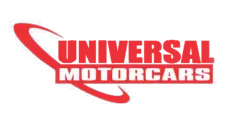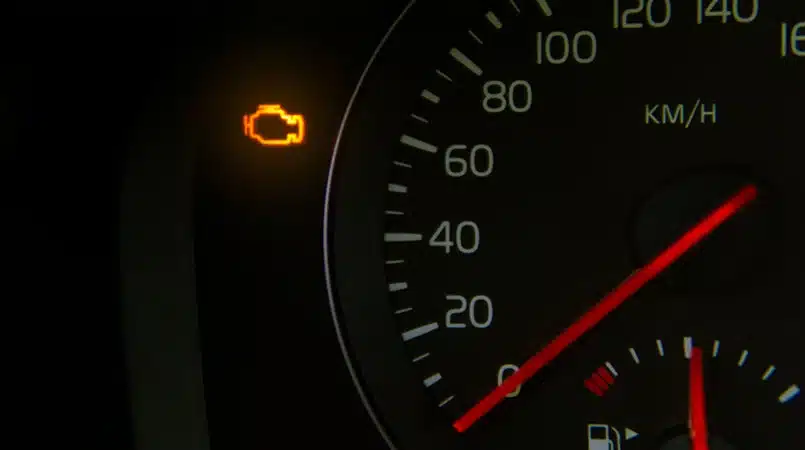A driver’s immediate stress rises whenever he or she sees the warning sign of the check engine light. While traveling on I-15 or waiting in the Sahara, the dashboard warning system suddenly displays a warning light like a danger signal. What now? Should you pull over? Is your engine about to blow?
All drivers in Las Vegas find themselves in the same situation. Las Vegas auto service facilities receive numerous customers because of the check engine light (CEL) appearing on their dashboards. A CEL signal does not always indicate a destructive situation. Universal Motorcars provides this thorough guide about the check engine light meaning at their Las Vegas location where they offer autobody repair with collision repair and car accident services.
What Does the Check Engine Light Really Mean?
Your vehicle incorporates a check engine light which functions as a component of onboard diagnostics (OBD-II). Your car computer shows a warning light when it identifies any system error that can be basic as a loose fuel cap or critical like an engine misfire.
It can appear in two forms:
- Solid Light: Non-urgent issue, should be addressed soon
- Flashing Light: Severe problem, such as a misfire. Stop driving and get assistance
The appearance of your check engine light does not matter because letting it persist will produce bigger complications. requiring expensive vehicle maintenance.
Why Does the Check Engine Light Come On?
Loose or Faulty Gas Cap
Gas caps equipped with rubber seals experience quick deterioration in Las Vegas’ dry hot climate which leads to vapor leaking and sets off the CEL.
Push the gas cap out from its slot then place it back. A proper inspection should be scheduled for the light which does not turn off after multiple drive cycles.
Failing Oxygen Sensor
The oxygen sensor inside your exhaust detects the amount of unused oxygen to manage your fuel-to-air ratio. The dusty weather conditions of Las Vegas hastens sensor deterioration.
Symptoms:
- Poor fuel economy
- Rough idle
- Failed emissions test
Catalytic Converter Issues
Engine overheating that results from combining desert driving with inadequate maintenance tends to deteriorate the catalytic converter. This key device decreases dangerous exhaust substances but suffers normal deterioration through use.
Warning Signs:
- Rotten egg smell
- Reduced acceleration
- Excessive heat under your car
Malfunctioning Mass Airflow Sensor (MAF)
Your MAF sensors will experience damage in Vegas due to the dry air conditions worsened by a neglected air filter.
Results in:
- Stalling or jerky acceleration
- Difficulty starting the engine
- Increased fuel consumption
Ignition Coil or Spark Plug Issues
Long exposures to extreme heat combined with repeated stop-and-go driving on the Las Vegas Strip road (such as the Vegas Strip) might cause ignition system malfunctions. The performance of your vehicle declines when you have either bad spark plugs or coils because they produce misfires.
Don’t wait if you notice:
- Hesitation while accelerating
- Engine misfire
- Poor gas mileage
EVAP System Leak
The Evaporative Emission Control System (EVAP) functions to stop fuel vapors from releasing to the atmosphere. A minimal leak throughout any hose can activate the check engine warning light of your vehicle.
High and low temperature extremes in Las Vegas eventually crack the plastic components found in EVAP systems.
Battery or Charging System Problem
Vehicle batteries in Las Vegas do not cope well with the regional heat. Insufficient engine voltage with faulty charging system components will activate the CEL.
Watch for:
- Dimming lights
- Slow engine crank
Local Factors That Accelerate Check Engine Issues in Las Vegas
Las Vegas creates several conditions which contribute to increased frequency of check engine alerts among vehicle owners.
- The excessive heat in Las Vegas accelerates deterioration of sensors alongside degradation of hose seals as well as damages to batteries.
- Early engine failure happens when dust particles with debris enter air filters and damage sensors while raising mechanical resistance.
- The stop-and-go movement during traffic creates overheating conditions which result in early ignition part deterioration.
- Vehicles driving at high altitudes particularly in the Red Rock area experiences deranged fuel-to-air ratios when their maintenance is neglected.
- The electrical components inside your vehicle become susceptible to damage when exposed abruptly to desert water because recommended water seals are not implemented.
Why Should a Check Engine Light Should Never Be Ignored?
The check engine light displayed by your vehicle generates many Las Vegas drivers to disregard it when their vehicle operates without noticeable issues. Your vehicle uses the check engine light to alert you about a developing problem which will worsen if you choose to disregard it. Drivers who operate vehicles in Las Vegas need to take proactive measures because extreme heat combines with heavy traffic and long freeway conditions.
Immediate inspection of your CEL is necessary because such negligence always leads to serious issues.
Expensive Repairs Later
Poor functionality of oxygen sensors or unsecured gas caps usually become the initial causes that launch CEL indicators. A variety of inexpensive solutions exist between $20 to $100 which can fix the problem. The unrepaired small engine problems simultaneously stress additional engine parts.
When an oxygen sensor fails it causes an engine to operate using excessive fuel that eventually leads to catalytic converter damage. The initial $50 maintenance cost transformed into the expenditure of more than $1,500 for replacing the catalytic converter.
The Dry and hot Las Vegas atmosphere accelerates engine wear-and-tear thus reducing the available time for taking preventive measures.
Reduced Safety on the Road
Your check engine light signals engine misfires with low fuel pressure and poor throttle response that results in reduced vehicle reliability without any prior indication. You may experience:
- Stalling at intersections
- Lurching or hesitation during acceleration
- A lack of vehicle power
- Unexpected shutdowns while driving
Traveling on I-15 and US-95 freeways poses a high risk since the unexpected power failure can cause dangerous accidents. Your safety systems such as traction control and anti-lock brakes will lose functionality when you choose to disregard the CEL warning.
Check Engine Light After a Collision? Here’s What It Could Mean
The formation of CELs is a common occurrence after any accident regardless of its severity because of three main factors:
- Dislodged sensors
- Wiring harness damage
- Exhaust damage causing O2 sensor errors
- Battery disconnection resetting systems
Universal Motorcars focuses on car crash repairs and post-accident system tests. We will conduct an inspection to find the precise problem before supplying an official document that suits insurance investigations.
Autobody Repair and Check Engine Light: How They Connect
Sometimes, CELs aren’t mechanical—they’re structural. The sources of accident damage either break the hood seal, damage the exhaust shield while also ruining the hood.
- Cause EVAP or sensor errors
- Components which let heat inside will affect their operational performance.
- Engine and emission system mounting points frequently experience breaks after such events.
Universal Motorcars operates as Las Vegas’ trusted full-service auto repair together with collision center and offers the following benefits to clients:
- State-of-the-art OBD-II scanners
- All our technicians maintain certification for any vehicle type
- The company offers competitive prices combined with speedy service.
- In-house collision repair, autobody repair, and car accident repair
- Insurance assistance & customer-first service

